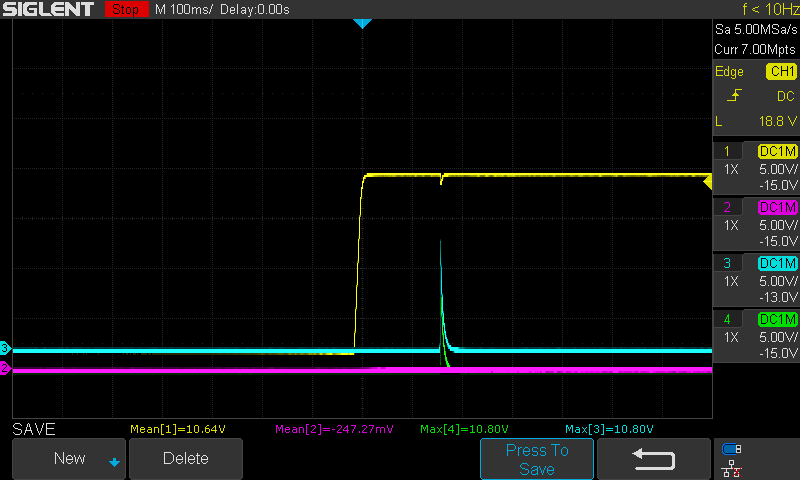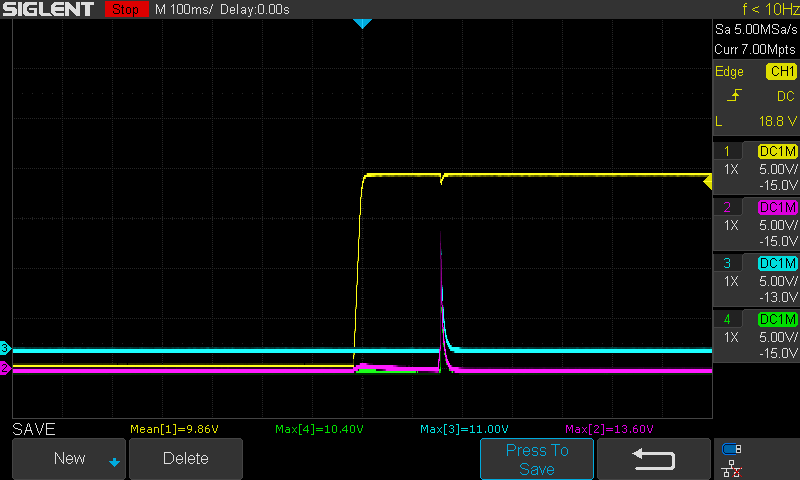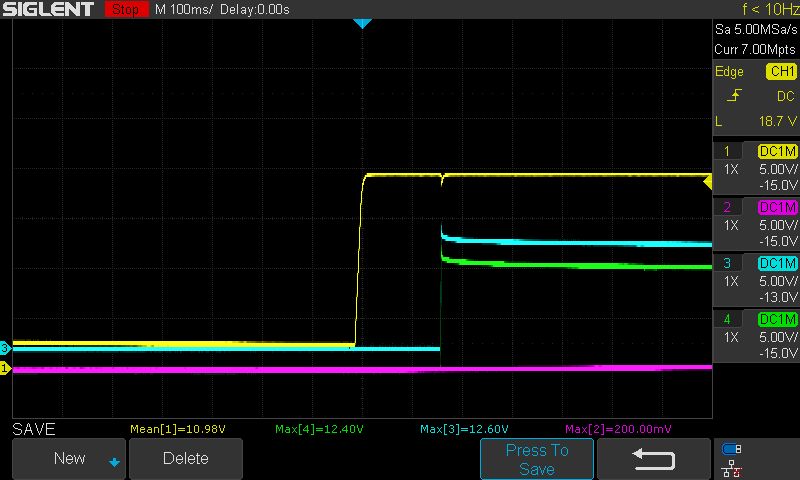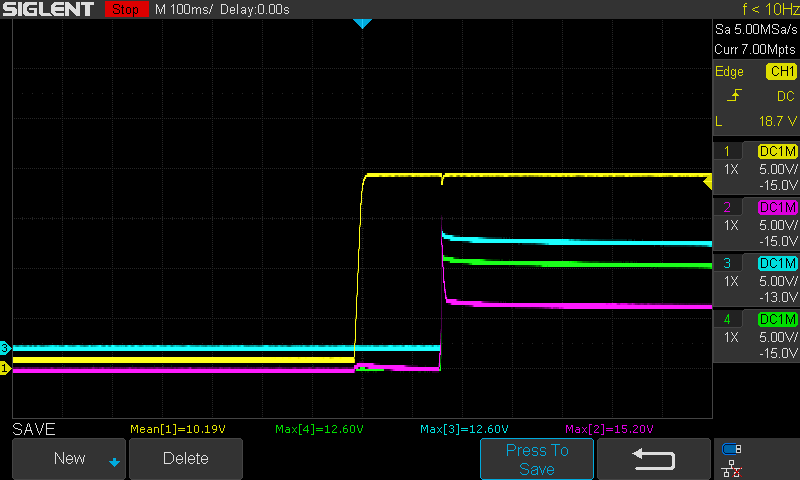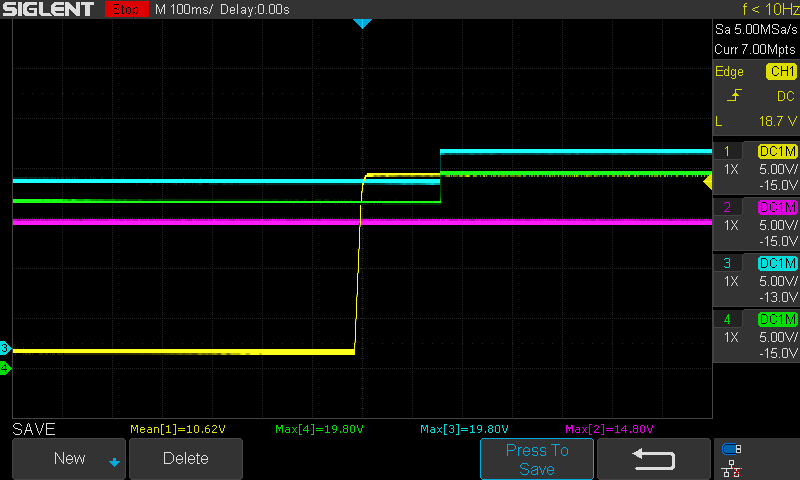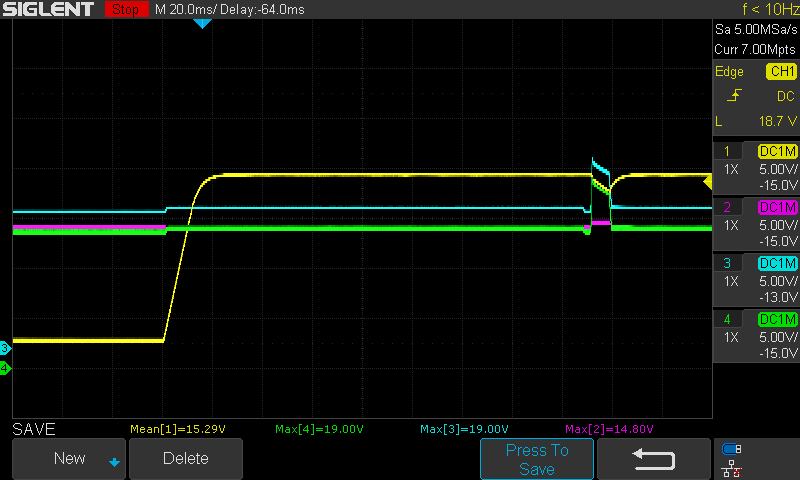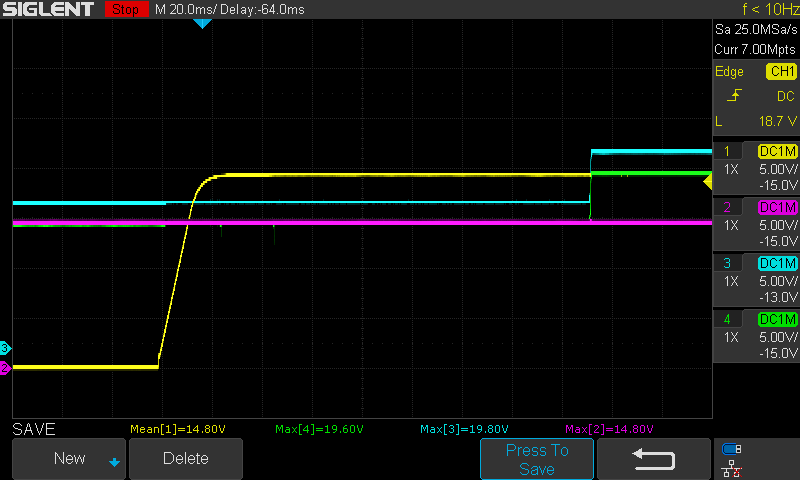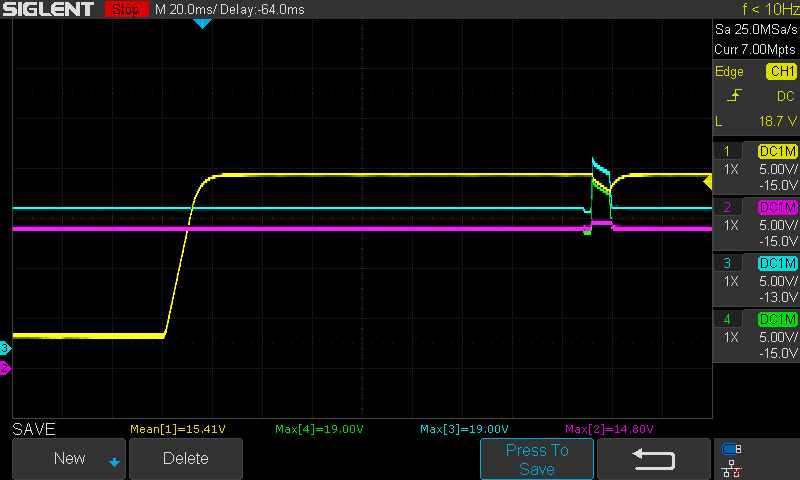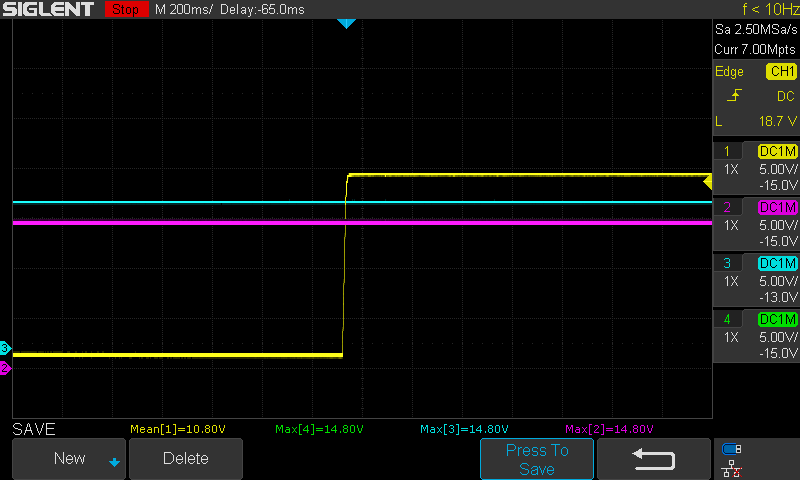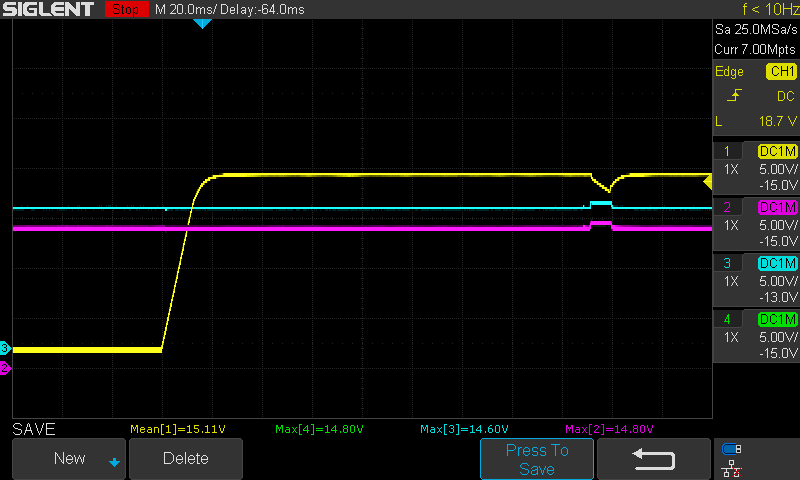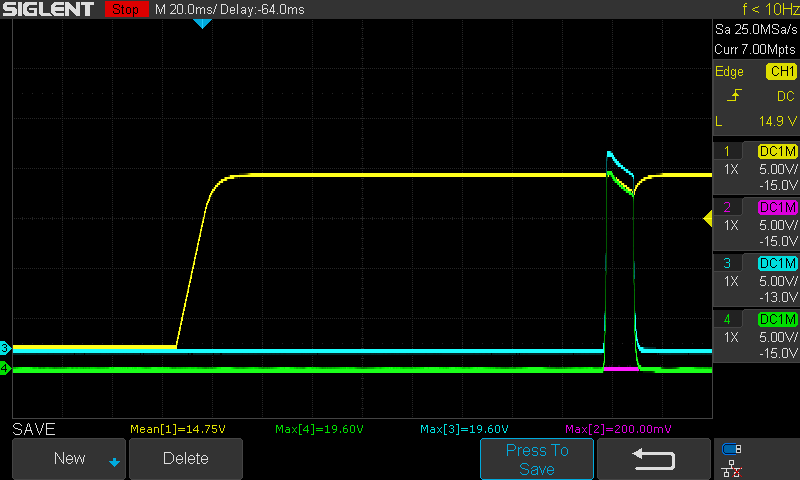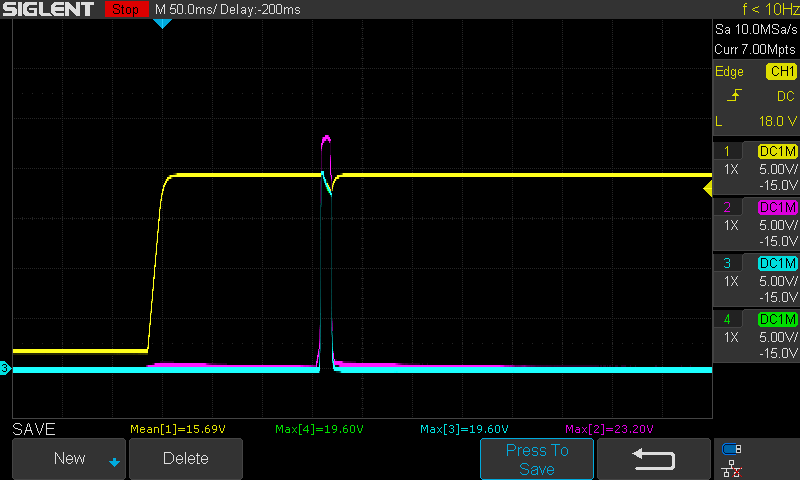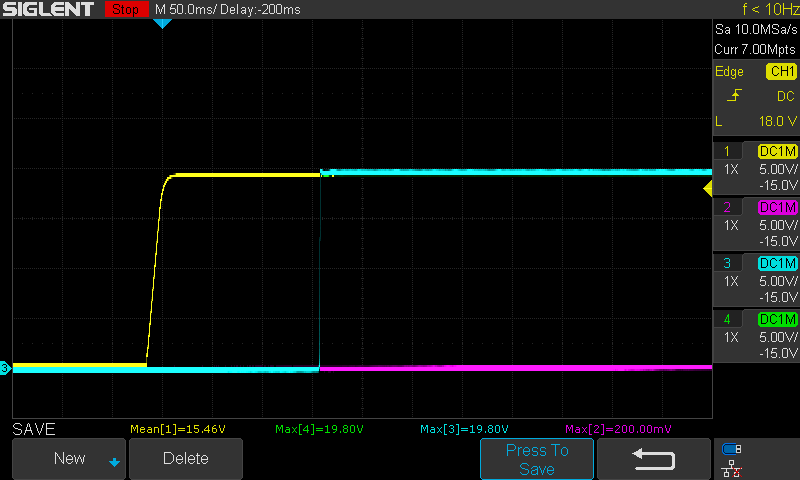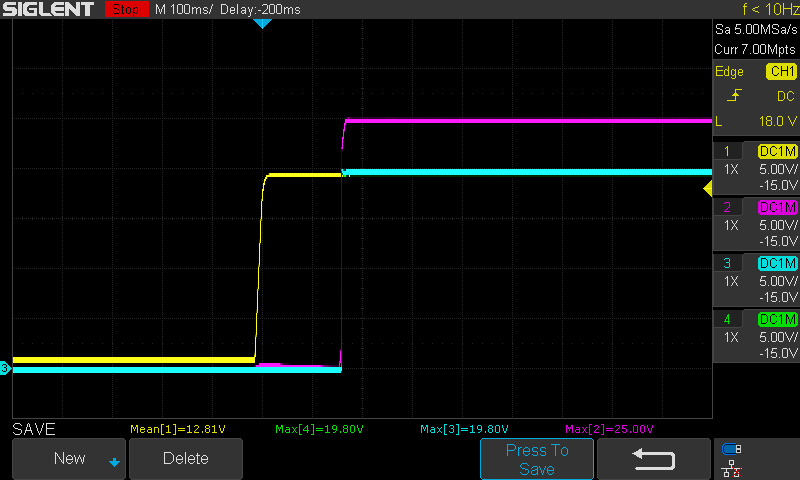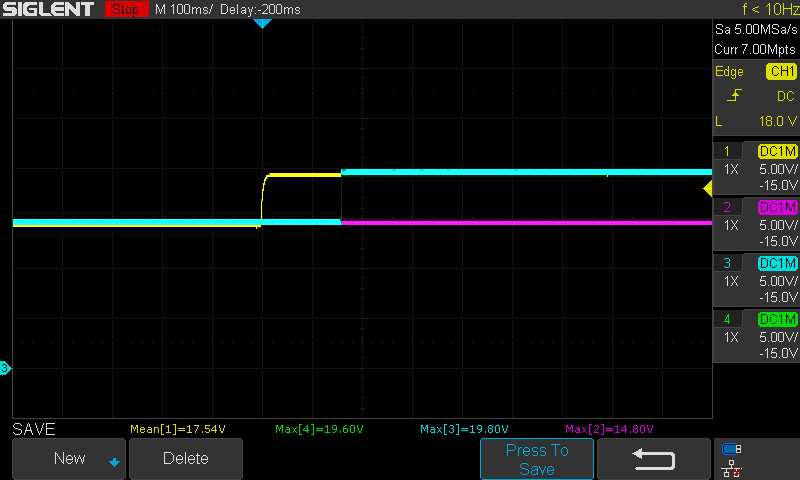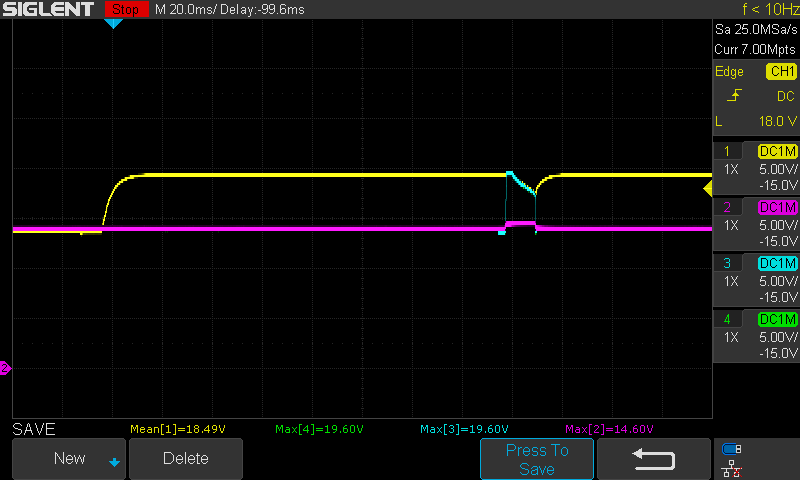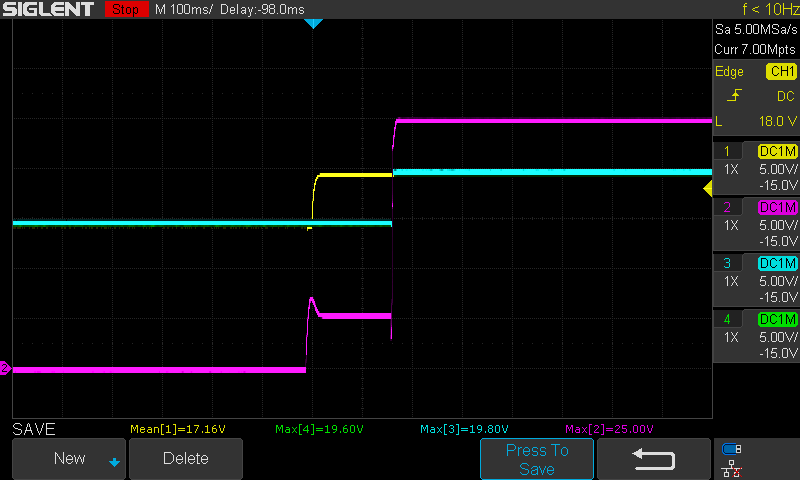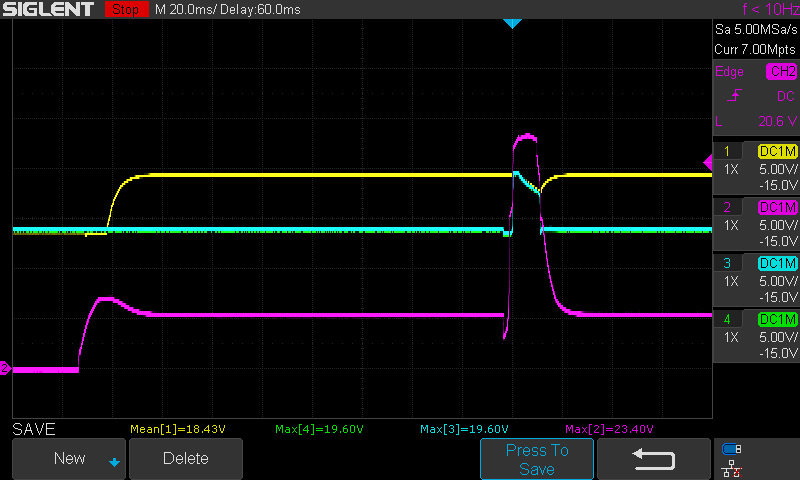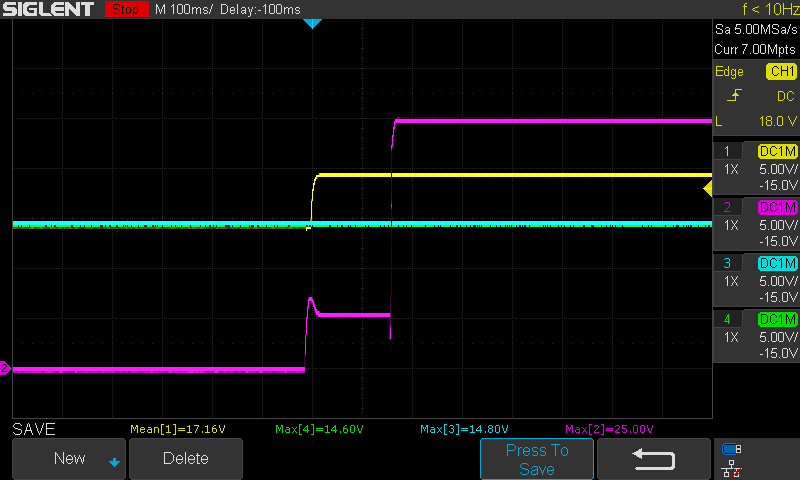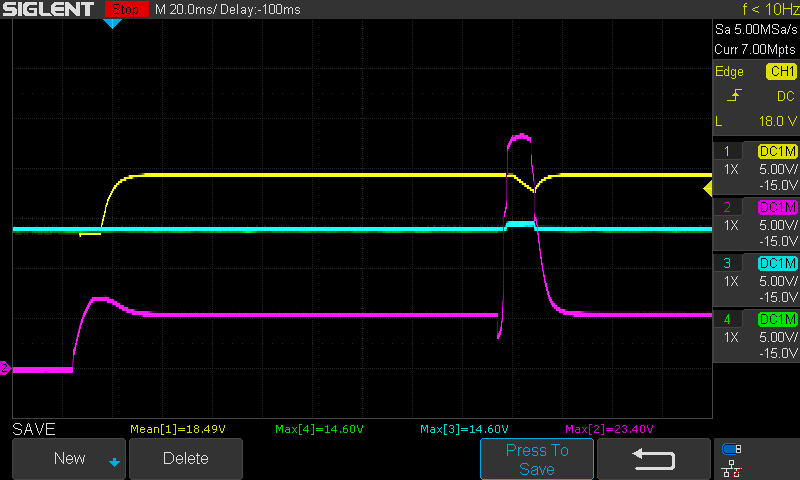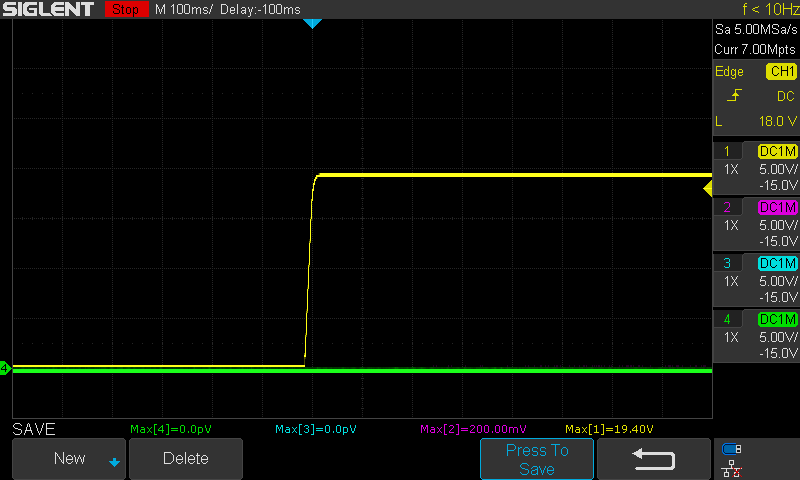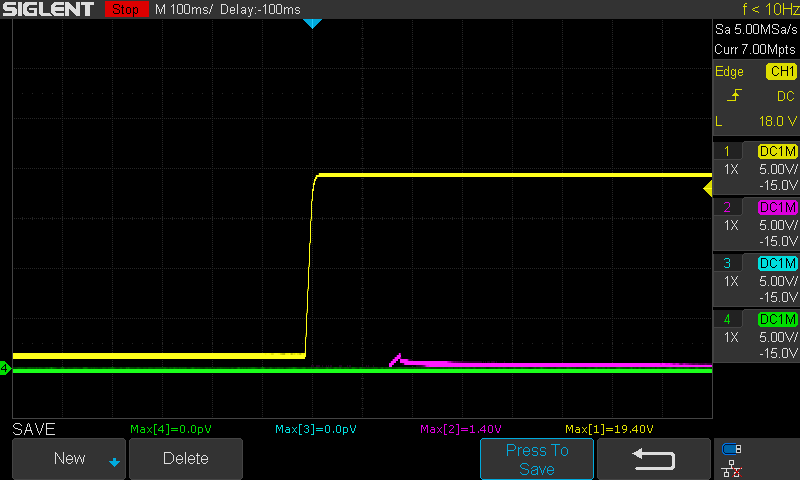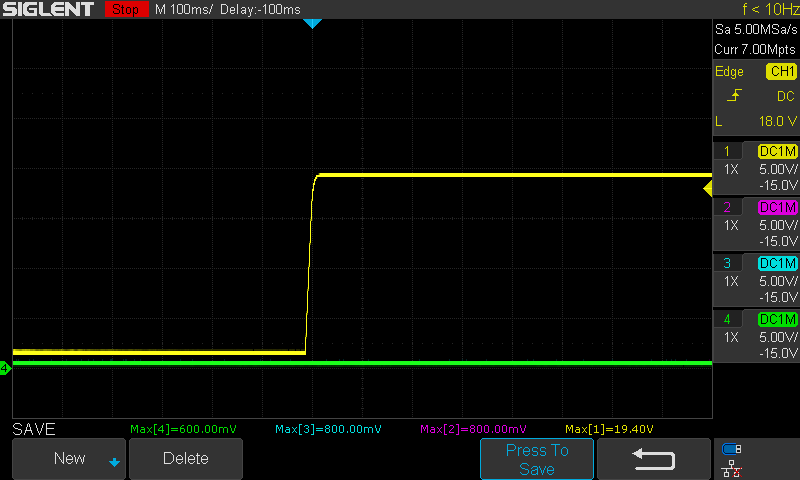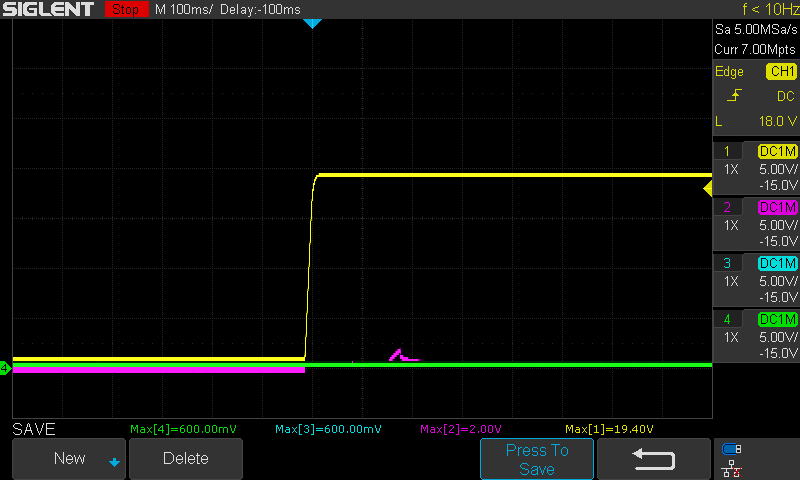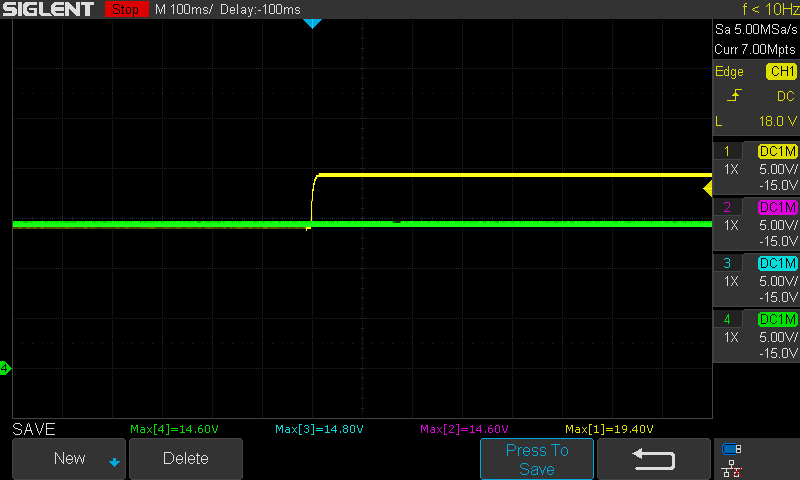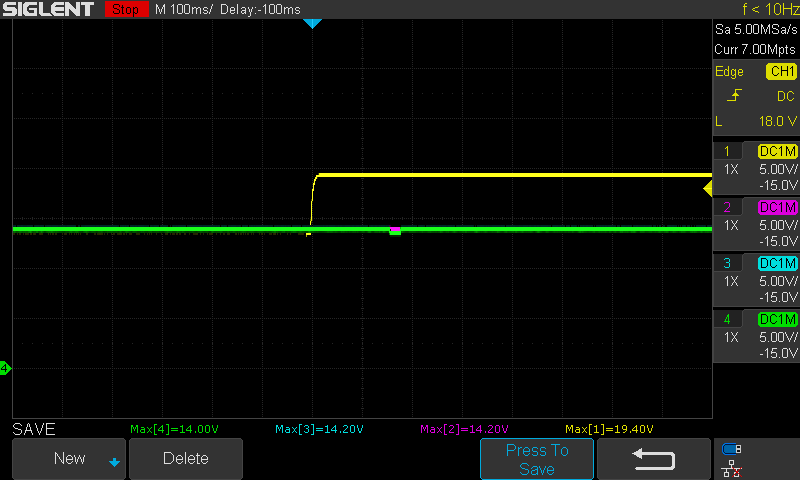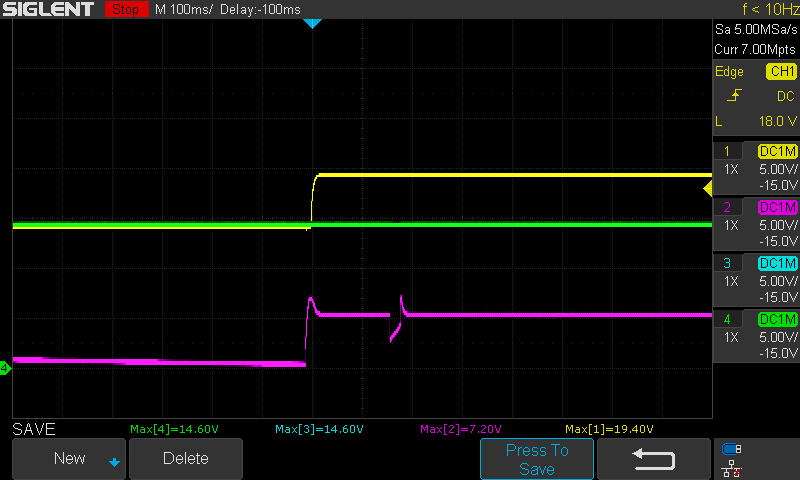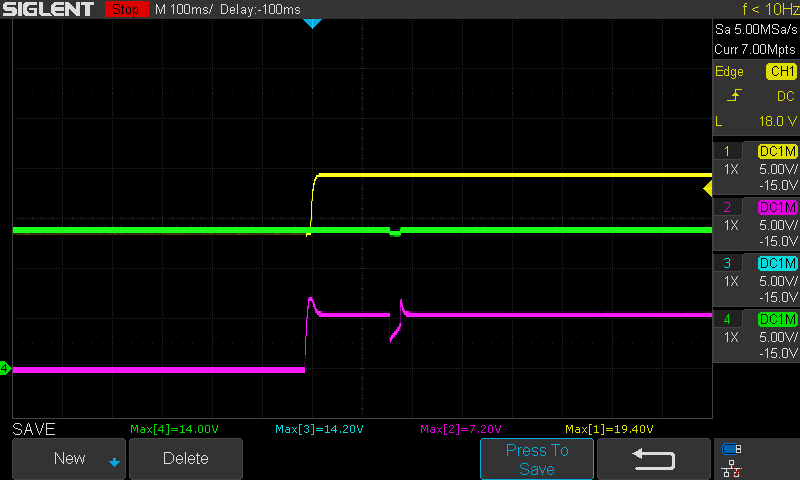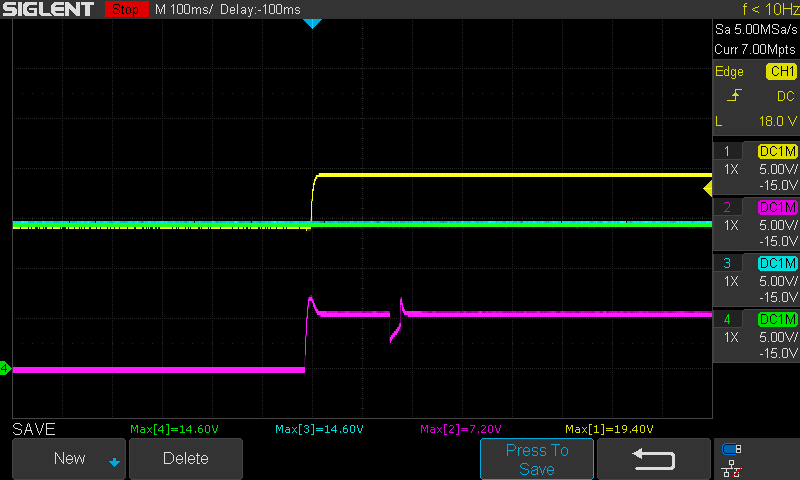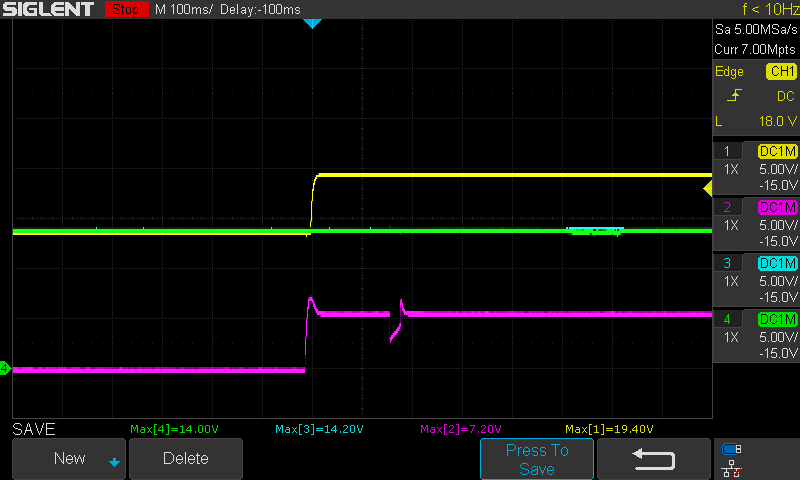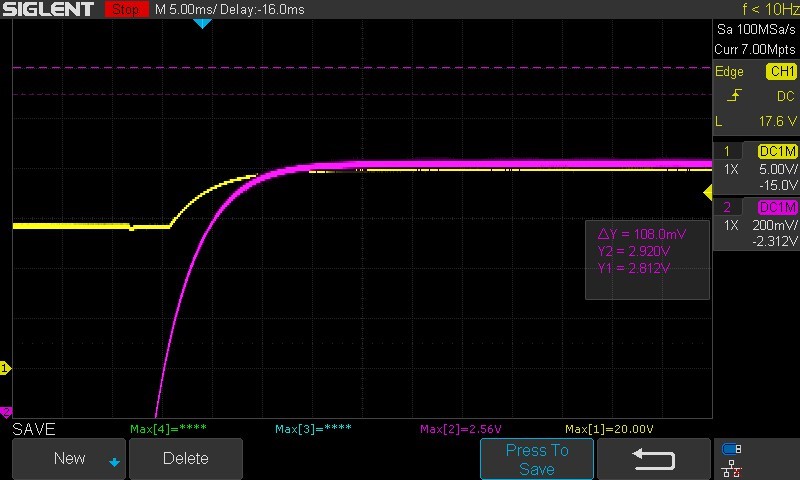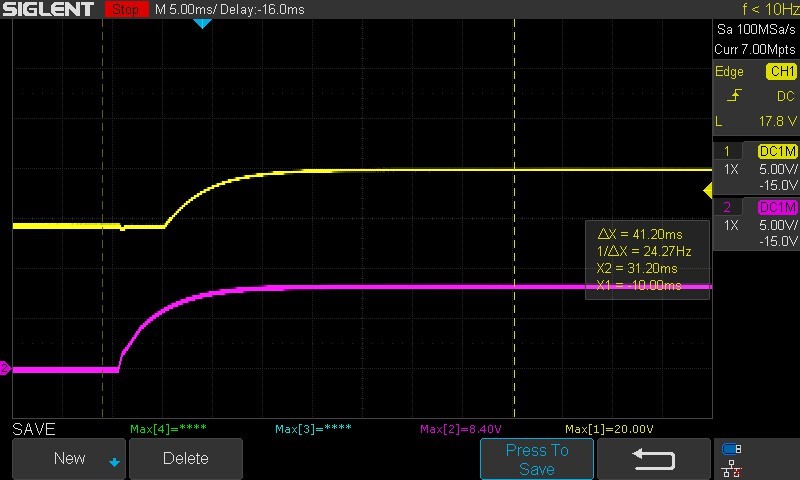Hello,
I implemented a BQ24725A in one of my design for a project.
We basically copied the datasheet design with the same part numbers to have minimum risks.
The problem is that the IC never starts charging our battery pack.
We observed that the ACFET and RBFET won't let the voltage pass when the cells are connected.
The ACFET and RBFET works properly when there is no cells connected to the circuit.
The IC detects the input voltage with ACOK.
We tried to investigate the problem with the different questions asked before but none answered our problem.
We designed for a 4S2P setup but we tested with a 4S1P setup (14,5V).
Our input voltage is 19,5V just like in the evaluation board procedure.
ILIM is 0,8 V
We did every step below, and every voltage had the right values.
Our registers are set to :
ADD - VALUE
0x12 - 0x8630
0x14 - 0x0640
0x15 - 0x41A0
0x3F - 0x1F80
The sequence for programming the chip is :
1 - Charge option configuration with enable bit to 1
2 - Charge option configuration with enable bit to 0
3 - Adapter current configuration (0x1F80) (8A)
4 - Charge voltage configuration (0x41A0) (16,8V)
5 - Charge Current configuration (0x0640) (1.6A)
6 - Read all registers (all values are fine)
7 - Loop every second (step 2 to 7)
After investigating we saw that there is always a 14,4V on the H-FET gate driver (HIDRV).
The IC seems to have the behaviour of the Inductor Short, MOSFET Short Protection explained in the 8.4.18 section of the datasheet.
We tried disabling IFAULT_HI Comparator Threshold Adjust bit [8] to eliminate this theory, but it didn't do much.
I linked the schematic, any help would be appreciated.
Thank you
Olivier


